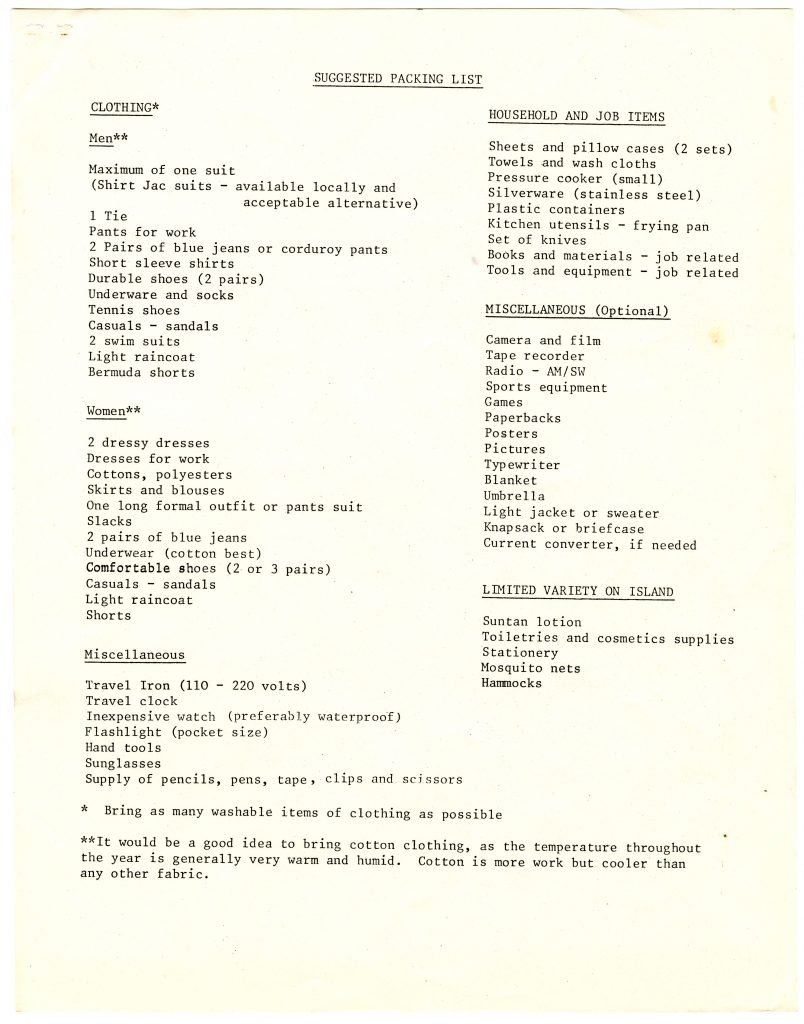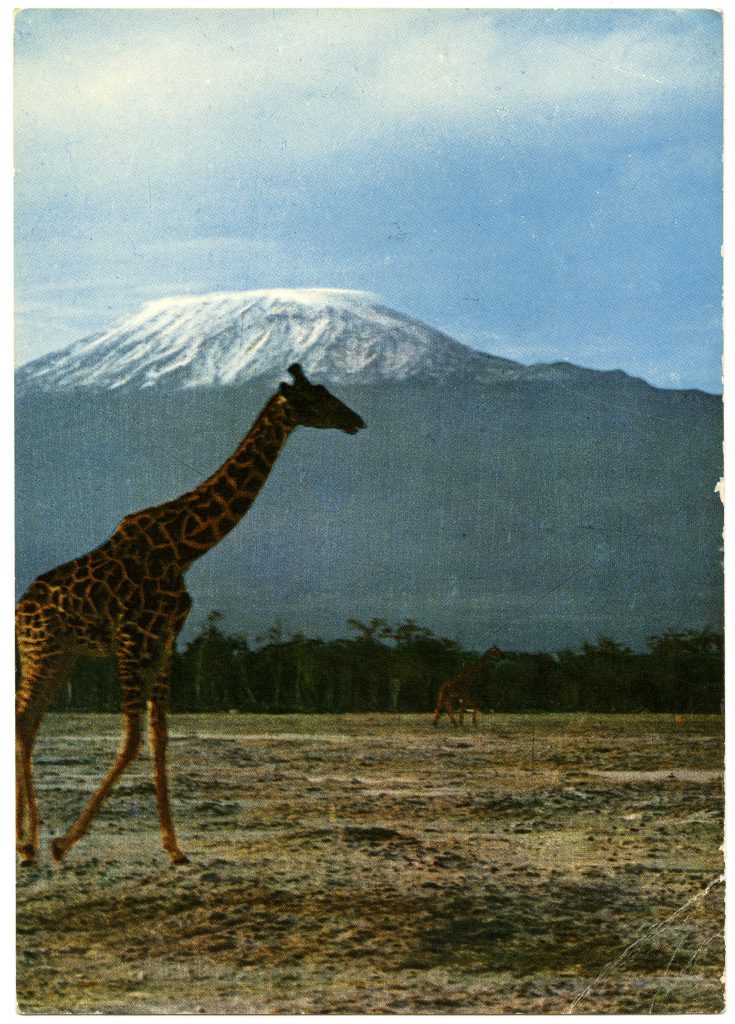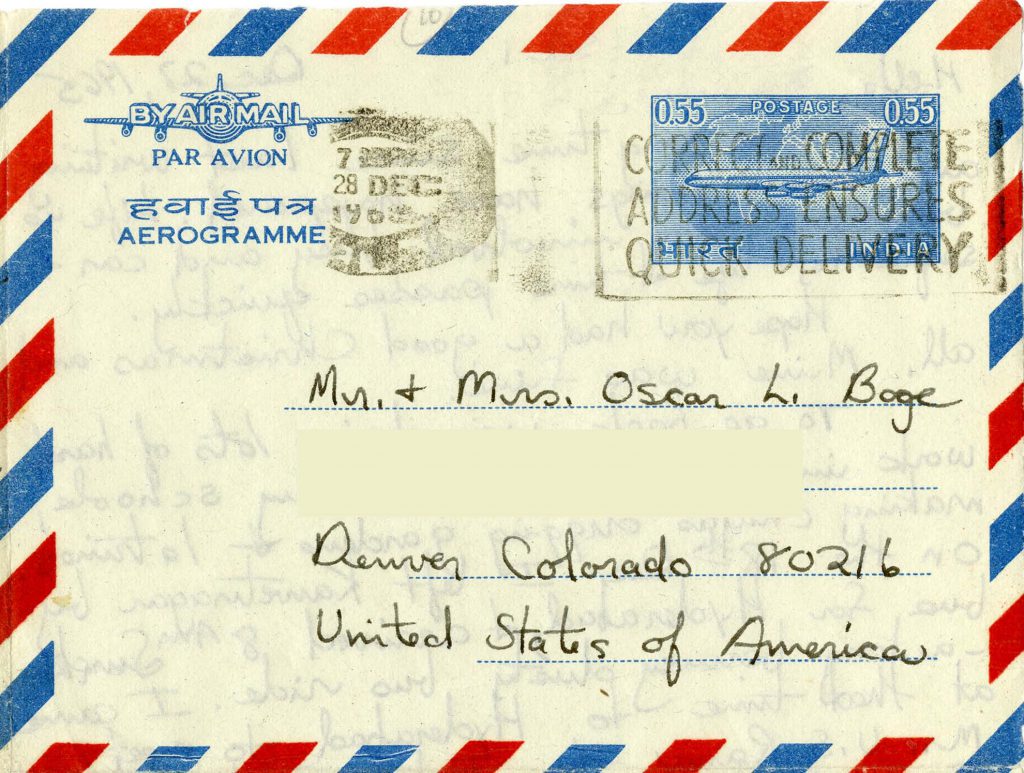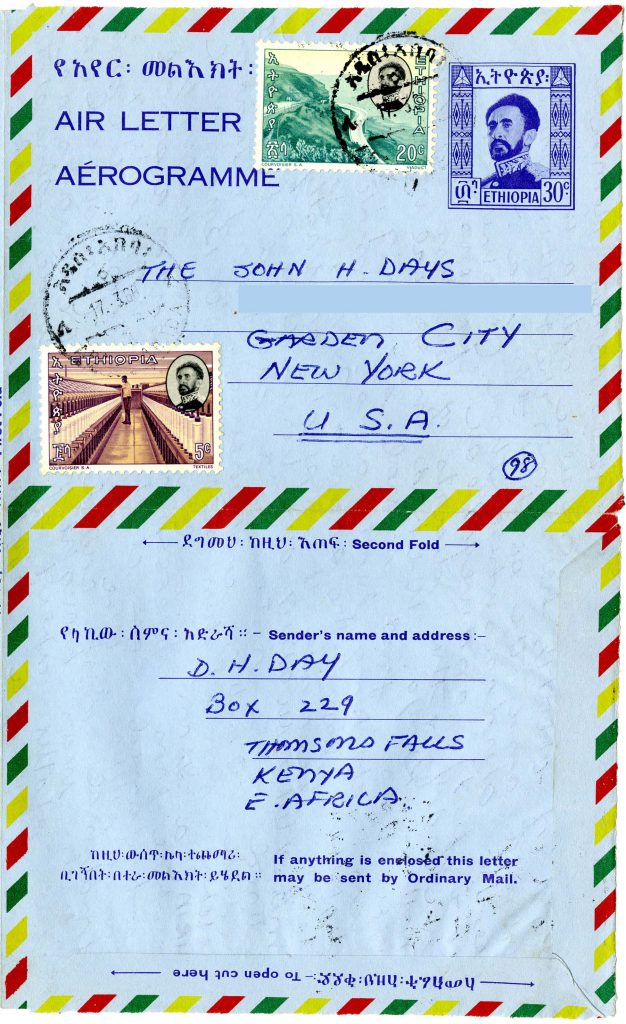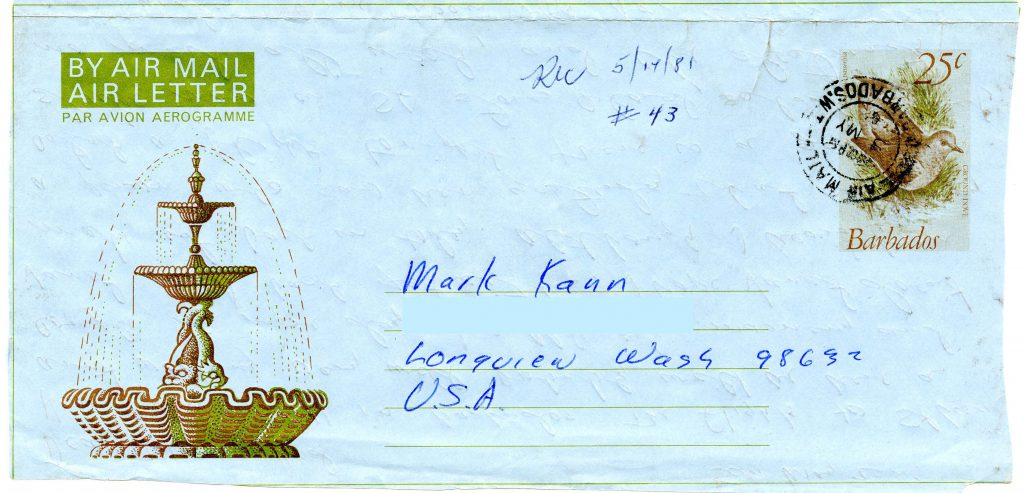Packing for a trip is overwhelming work. For Peace Corps Volunteers, packing for a two year service trip is even more difficult. PCVs were often traveling to remote locations in far off countries. They had to consider climate, type of work, and culture when they selected what to bring with them. The Peace Corps not only sent detailed lists of what to pack ahead of each PCVs’ trip, they also provided kits of their own to ensure each Volunteer had what they required.
Pictured here, Meghan Keith-Hynes is ready and packed for her trip to Haiti, where she volunteered in Agroforestry in 1986.
Steve and Janet Kann served in the Eastern Caribbean in Practical Education Development in 1980-1982. On their packing list, they are instructed to bring as much washable and cotton clothing as possible due to the warm and humid weather they would encounter. They were also not expected to bring a lot of formal clothing. The list includes a number of items which might be hard to find on the islands they traveled to.
Tom Hebert served in Nigeria from 1962-1964 as a teacher and as the Tour Manager for University of Ibadan’s Shakespeare Traveling Theatre. Hebert received this list of items of household items that the Peace Corps would provide him. In addition to kitchen supplies and bed linen, it includes a clock, flashlight, and lock.
PCVs had a limited number of possessions during their service, many of which they brought with them from the start. These lists helped narrow down the essentials for PCVs to pack.
For more information, please visit the Peace Corps Community Archive website. To use the collections or make a donation, please contact the AU Archives at archives [at] american.edu.


